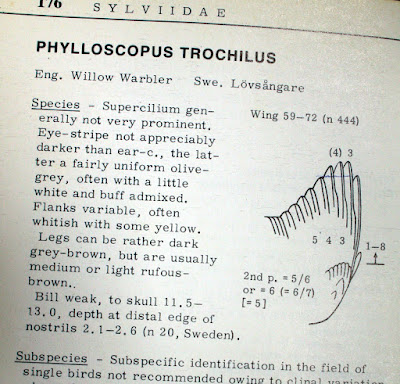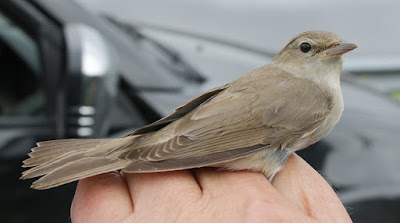Wednesday proved somewhat disappointing when a visit to the 180 strong Sand Martin colony resulted in a catch of just one juvenile. Our previous visit of 24 June saw a reasonable catch of twenty-three -24 June, but visits here are very unpredictable.
The difficulty is in tempting the martins into a less than ideally placed net just too far away from the quarry face in both the vertical and horizontal planes. This will now be the final visit of 2020 but with luck the martins may choose a different part of the cliff face in 2021, one that makes the monitoring of them easier.
Sand Martin - juvenile
However, all was not lost. The hour and more we spent waiting for the martins to cooperate led to a few other sightings - Hobby, Kestrel, Common Tern, 2 Buzzard, 4 Oystercatcher, 2 Grey Herons, 2 Swallow, 12 Linnet, 2 Pied Wagtail, and over 120 Curlews flying to nearby pasture.
We caught the first Linnet of the autumn period prior to restarting Project Linnet for 2020/2021.
Linnet - juvenile/first year male
Upon going to a nearby copse to investigate cries of “feed me, feed me”, flapping at the foot of a tree stood a young Buzzard of suitable age for a “G” ring. It may have been a Buzzard “branchie”, a young bird still fed by parents but one which leaves the nest, climbs onto outer branches of the tree, only to be then blown or fall to the floor before it is able to actually fly.
Buzzard
Buzzard
The word “branchie” is an old name applied to other species, very often young Rooks who quickly explore the surroundings of their treetop nests where they nest in large colonies. The term is the probable origin of the ancient verse, “Sing a song of sixpence, a pocket full of rye, four and twenty blackbirds baked in a pie”. Young Rook meat is said to be very savoury with a similar taste to Wood Pigeon meat.
In Olde Englande a visit to a large Rook colony after a spell of strong winds might easily yield a catch of two dozen black birds for a tasty pie.
Rookery - by John Petrov
If the forecast is correct Friday morning will see us in the near Pennines at Oakenclough again. Not so much the hills alive to The Sound of Music as the sight and sounds of birds we hope.
Linking this post to Eileen's Saturday Blog and Anni in Texas.
Linking this post to Eileen's Saturday Blog and Anni in Texas.
































































.jpg)











